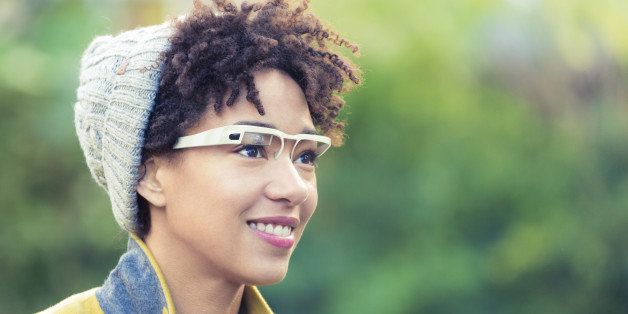
For the past few years, we've been led to believe that it is (finally, again) 'the year of mobile.' Thanks in part to continued smartphone enhancements allowing mobile phones to evolve beyond being portable communication hubs, and into always-on marketing devices, offering access to endless amounts of consumer data and real-time targeting capabilities made possible by location-driven technologies.
But what happens when mobile devices are no longer the only portable devices marketers can leverage to drive their businesses forward? What if there was something that provided both consumer intelligence AND emotional intelligence?
Wearable technologies, such as glasses, watches, fitness trackers, sleeping monitors, and other devices, are quickly revealing themselves to be the newest evolution of mobility and location marketing. With wearable smart device sales worldwide predicted to reach 64 million units by 2017 (source: Berg Insight), it won't be long before wearable technology takes up increasing mind and heart space (as well as physical body space) among consumers. Recent announcements such as Google's Android Wear only remind us that the battle over smart device domination has just begun.
As consumers flock to strap on the latest in fitness technologies such as a Fitbit, Pebble's watch or Jawbone's UP, or drool over the futuristic capabilities of Google Glass, it is clear that, while there is no distinct winner (yet) among feature-rich, functional devices, wearable technologies are playing an important role in lives of today's digitally savvy consumers. They help them monitor and track not only their physical fitness and well-being, but also the everyday details of our lives we don't necessarily think about but rely on to make it through the day, such as thermo-electric bracelets that heat or cool your body, watches that provide information throughout the day to help you do your job, etc.
While the wearable revolution offers virtually limitless applications across a number of verticals, we have only begun to scratch the surface. With new products being announced on a seemingly weekly basis, such as Will.i.am's smartwatch coming this summer, which is designed to make calls, play music and sync with various social platforms, the possibilities of what these devices do and the roles they can play in the lives of consumers seems relatively endless.
Currently, today's wearable devices lack the functionalities of many smartphones or even tablets. The result? One-third of American consumers who have owned a wearable product stopped using it within six months (source: Endeavour Partners). However, don't count smart devices out as a passing fad. While smartphones can seamlessly capture data such as a user's location, purchases and how often they use an app or mobile website, data based on the intangibles, such as physical and emotional state, are untraceable by today's smartest smartphone. Many of the devices that will help us monitor and improve our lives in the future haven't even been dreamt up yet, let alone built (remember the rumors of Microsoft's smart bra designed to help women avoid emotional overeating?).
Wearable technologies promise the potential of opening up marketers to an entirely new set of data points, resulting in a far more detailed understanding of consumers, their behaviors, and the drivers of those behaviors. These intricate details can identify the nuances between action and reaction (e.g. stress levels and movement) as well as provide specificities of a user's location (indoor vs. outdoor spaces compared to just knowing the general vicinity). Plenty of brands are recognizing this and preparing to tap into the power of smart devices' data. For example, eBay recently announced a focus on bringing commerce to wearable devices and connected devices, emphasizing the desire to bring commerce into any screen imaginable.
Furthermore, all of these hands-free, inherently mobile devices offer marketers data opportunities that will only increase with enhancements in wearable technologies' capabilities. If announcements made and products launched in the first half of 2014 are of any indication, vast opportunities exist for marketers to enhance their mobile and location marketing strategies based both on what people do, as well as how they feel.
As Nike's recent move to downsize its FuelBand division hints at, there's plenty of evolution in wearable device's future to determine the best ways to help us live more connected lives. With major players like Apple and Samsung sure to deliver products designed for the mainstream and wearable at the core, mark my words: commerce isn't the only thing that wearable devices will ultimately redefine; we're looking at entirely reprogrammed ways of living throughout our everyday lives, based on the constant connectivity and data inputs that wearables already do and will soon provide in the future.
Originally published here on Wired Innovation Insights.